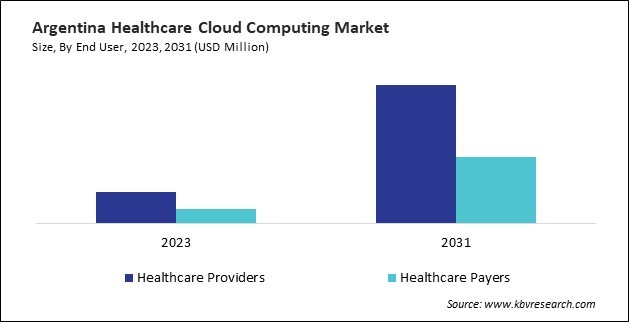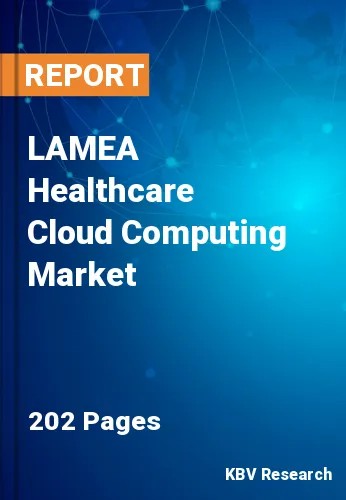The Latin America, Middle East and Africa Healthcare Cloud Computing Market would witness market growth of 19.9% CAGR during the forecast period (2024-2031).
The Brazil market dominated the LAMEA Healthcare Cloud Computing Market by Country in 2023, and would continue to be a dominant market till 2031; thereby, achieving a market value of $2,960.2 million by 2031. The Argentina market is registering a CAGR of 21.5% during (2024 - 2031). Additionally, The UAE market would capture a CAGR of 18.7% during (2024 - 2031).

In data analytics, cloud computing has become an indispensable tool for healthcare organizations looking to harness the power of big data and artificial intelligence (AI). By processing and analyzing massive datasets in a quick and effective manner, cloud computing enables healthcare companies to make decisions that are driven by data, which improves both the quality of care provided to patients and administrative efficiency.
In addition, cloud platforms can support the integration of AI-driven diagnostic tools that analyze medical images, detect abnormalities, and assist healthcare providers in making more accurate diagnoses. The shift toward value-based care models, which place a higher priority on lowering healthcare costs as well as improving patient outcomes, is the driving force behind the expanding adoption of healthcare cloud computing.
South Africa is seeing rising demand for healthcare cloud computing due to its increasing disease burden, particularly from chronic diseases such as HIV, diabetes, and cardiovascular diseases. The South African National Department of Health reports that NCDs contribute to over 60% of all deaths in the country. The South African government has recognized the importance of cloud-based platforms to manage large volumes of healthcare data, facilitate patient monitoring, and streamline disease management.
The National Department of Health has invested in cloud solutions to improve access to medical records and health data nationwide, enabling healthcare providers to make more informed decisions. The growing demand for remote monitoring and real-time access to patient information has made cloud computing a critical component of the nation’s healthcare strategy. Thus, the region’s focus on telehealth, AI, and EHR systems is expected to continue driving demand for cloud computing, making it an essential component of the future healthcare landscape in LAMEA.
Free Valuable Insights: The Worldwide Healthcare Cloud Computing Market is Projected to reach USD 142.7 Billion by 2031, at a CAGR of 17%
Based on Application, the market is segmented into Clinical Information Systems (CIS) {Electronic Health Records (EHR), Picture Archiving and Communication System (PACS), Radiology Information System (RIS), and Others (COPE, PIS, etc.)}, and Non-clinical Information Systems (NCIS) {Revenue Cycle Management (RCM), Billings & Accounts Management Solution, and Others (SCM, HIE, etc.)}. Based on Service Model, the market is segmented into Software as a Service (SaaS), Platform as a Service (PaaS), and Infrastructure as a Service (IaaS). Based on Deployment Model, the market is segmented into Public Cloud, Private Cloud, and Hybrid Cloud. Based on End User, the market is segmented into Healthcare Providers (Hospitals, Diagnostic and Imaging Centers, Pharmacies, and Ambulatory Centers) and Healthcare Payers (Private Payers and Public payers). Based on countries, the market is segmented into Brazil, Argentina, UAE, Saudi Arabia, South Africa, Nigeria, and Rest of LAMEA.
By Application
By Service Model
By Deployment Model
By End User
By Country
Our team of dedicated experts can provide you with attractive expansion opportunities for your business.

